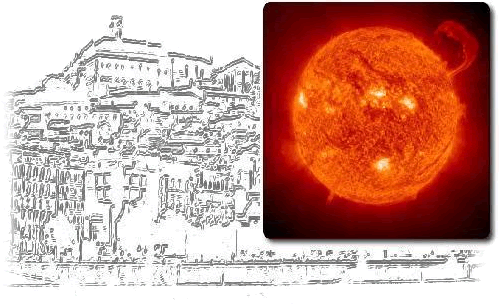|
|
|
|
|
|
|
|
|
|
|
|
|
Meetu Verma, Mrs. - PhD |
|
Leibniz-Institut für Astrophysik Potsdam (AIP), Potsdam, Germany |
|
http://www.aip.de/Members/mverma |
|
|
|
|
|
Session 1 - Speaker |
|
High-resolution 3D flow fields around solar active regions |
|
M. Verma, C. Denker, S.J. González Manrique,
M. Sobotka and the GREGOR Team A1-3 (Leibniz-Institut für Astrophysik Potsdam
(AIP), Potsdam, Germany) A3 (University of Potsdam, Germany) A4 (Astronomical
Institute, Academy of Sciences of the Czech Republic, Czech Republic) |
|
|
|
Accurate measurements of magnetic and velocity fields in and around solar
active regions are key to unlocking the mysteries of the formation and the decay of
sunspots. High spatial resolution image and spectral sequences with a high cadence
obtained with the GREGOR solar telescope give us an opportunity to scrutinize 3-D
flow fields with local correlation tracking (LCT) and imaging spectroscopy. We
present GREGOR early science data acquired in July/August 2014 with the GREGOR
Fabry-Pérot Interferometer (GFPI) and the Blue Imaging Channel (BIC).
Time-series of blue continuum images (λ 450.6 nm) images of the emerging
flux region NOAA 12118 were restored with the speckle masking technique
to derive horizontal proper motions and to track the evolution of morphological
changes. Growth and decay rates for area and magnetic flux are presented. In
addition, we searched the GREGOR/GFPI data archive for occasions when new flux
emerges or old flux decays and present the respective Doppler maps. All high
resolution observations are discussed in the context of synoptic data from the Solar
Dynamics Observatory (SDO).
The 1.5-meter GREGOR solar telescope was built by a German consortium under the
leadership of the Kiepenheuer Institute for Solar Physics in Freiburg with the
Leibniz Institute for Astrophysics Potsdam, the Institute for Astrophysics
Göttingen, and the Max Planck Institute for Solar System Research in Göttingen as
partners, and with contributions by the Instituto de Astrofísica de Canarias, the
Istituto Ricerche Solari Locarno, and the Astronomical Institute of the
Academy of Sciences of the Czech Republic. |
|
|
|
|
|
|
|




 









 |



